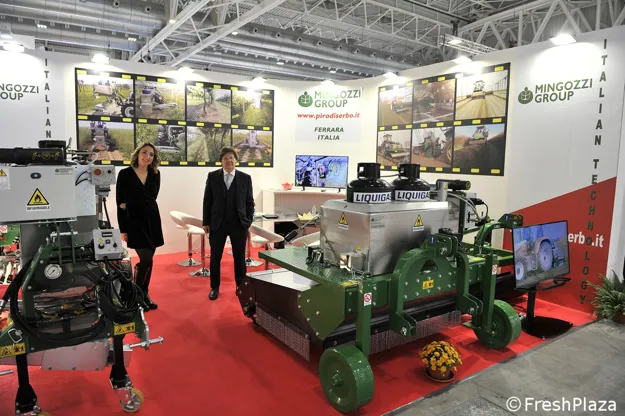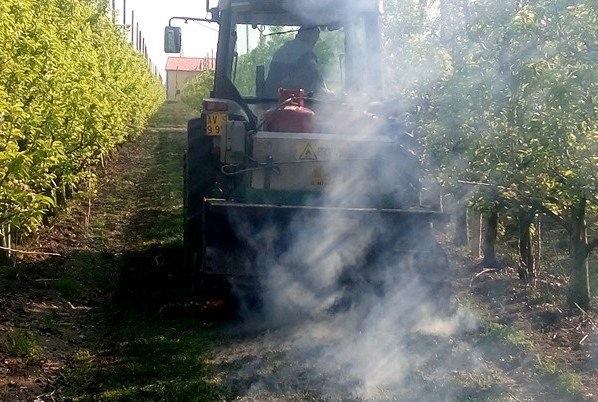Various tests against pear brown spot have been carried out between 2019 and 2021. "Flame weeding has been the go-to technique for years now. From an ecological point of view, its environmental impact is negligible as the burning GPL forms exclusively water vapor and carbon dioxide, plus the flame is transparent and does not produce smoke. This means the flame can hit any flooring or cover that does not have a low combustion temperature without even altering the color," reports Marco Mingozzi from Officine Mingozzi.
The heat generated by the burners does not exceed 50-60°C, which are often reached during the warmest hours of the summer season anyway. Therefore, the damage to the microflora and microorganisms is negligible, while there are no risks for operators and no toxic residues are released into the environment.
 Right: Marco Mingozzi
Right: Marco Mingozzi
Flame weeding has proved effective against brown spot and operations are best carried out in the spring. "The spores of Stemphylium vesicarium, the agent that causes the brown spot, damage the peel of the pear and it is in these lesions that fungi settle. This is why it is necessary to go in deep and remove the Stemphylium found in the weeds. Thanks to flame weeding, some companies experienced minimum damage compared to other hectares weeded with more traditional systems."

Depending on the climate conditions and extent of the disease, the following interventions can be carried out:
1) Fall treatment, after the leaves have fallen, with the objective of reducing the presence of spores on the ground.
2) Alternatively, the first treatment can be carried out in the winter, by mid-March. The operation must be carried out when the cut grass has lost good part of its humidity so as to speed up the use of the flame.
3) A second treatment must be carried out in the spring, approximately 20 days after the first one, yet by mid-April. This operation must bring the cut weeds within the rows to a light combustion. The effect is favored by the presence of the dehydrated superficial layer created by the first operation.
Operations work better if carried out during the warmest hours of the day. In this case, the same type of intervention must be carried out on the grass both between and on the rows.

Officine Mingozzi
Via Val d'Albero 25/B
Ferrara
info@pirodiserbo.it
www.pirodiserbo.it
